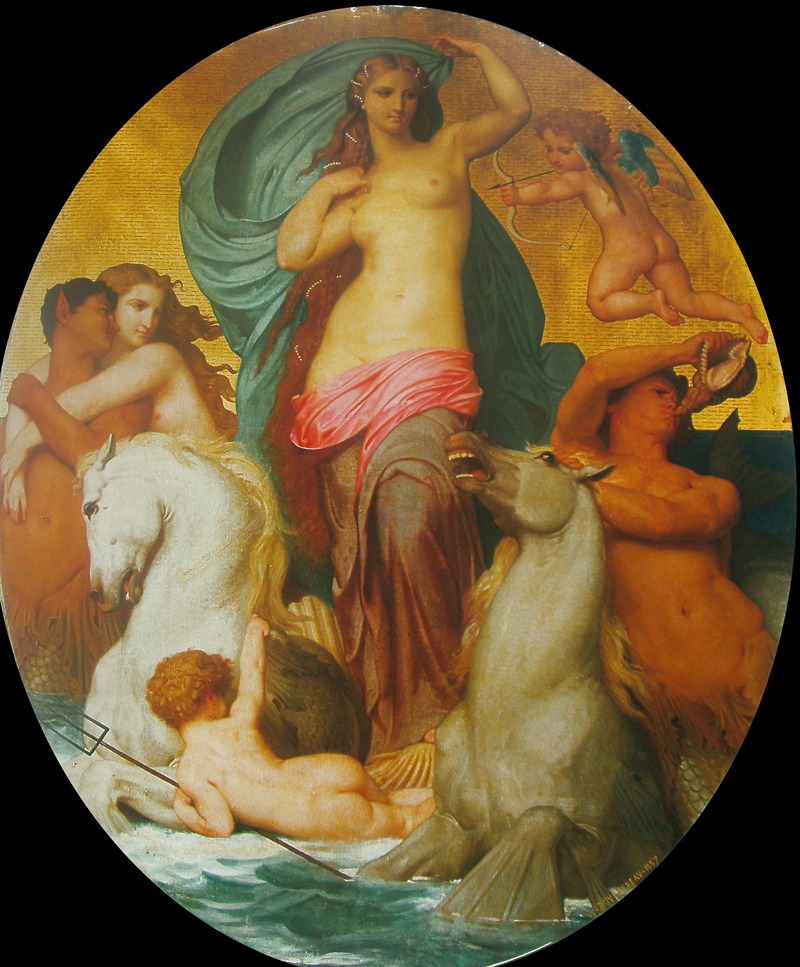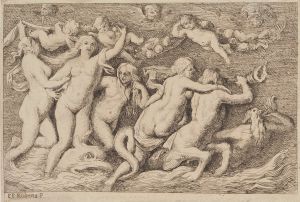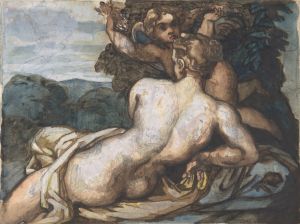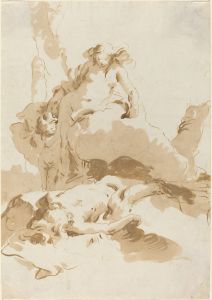
Venus Triumphant
A hand-painted replica of William Bouguereau’s masterpiece Venus Triumphant, meticulously crafted by professional artists to capture the true essence of the original. Each piece is created with museum-quality canvas and rare mineral pigments, carefully painted by experienced artists with delicate brushstrokes and rich, layered colors to perfectly recreate the texture of the original artwork. Unlike machine-printed reproductions, this hand-painted version brings the painting to life, infused with the artist’s emotions and skill in every stroke. Whether for personal collection or home decoration, it instantly elevates the artistic atmosphere of any space.
"Venus Triumphant" is a painting by the renowned French academic artist William-Adolphe Bouguereau, completed in 1890. Bouguereau was known for his realistic genre paintings and his skillful depiction of the human form, often drawing inspiration from classical themes and mythology. "Venus Triumphant" is a quintessential example of his work, showcasing his mastery in rendering the human figure with exquisite detail and idealized beauty.
The painting depicts Venus, the Roman goddess of love and beauty, in a triumphant pose. She is portrayed as a classical nude, a common motif in Bouguereau's oeuvre, which reflects the artist's admiration for the Renaissance and classical antiquity. Venus is shown standing gracefully, her body turned slightly to one side, with her head tilted gently, exuding an aura of serene confidence and divine allure. Her skin is rendered with Bouguereau's characteristic smoothness and luminosity, emphasizing her ethereal and idealized beauty.
Surrounding Venus are a group of cherubic figures, often referred to as putti, which are frequently included in Bouguereau's mythological and allegorical works. These playful, winged children add a sense of movement and liveliness to the composition, as they appear to celebrate Venus's triumph. The putti are depicted with the same attention to anatomical detail and lifelike quality that Bouguereau applied to his portrayal of Venus, further enhancing the painting's overall harmony and balance.
The background of "Venus Triumphant" is relatively subdued, with soft, muted tones that serve to highlight the central figures. Bouguereau's use of light and shadow is particularly effective in creating a sense of depth and three-dimensionality, drawing the viewer's eye towards the goddess and her attendants. The composition is carefully arranged to guide the viewer's gaze, with the flowing lines of Venus's hair and the putti's limbs creating a dynamic yet harmonious visual rhythm.
"Venus Triumphant" exemplifies Bouguereau's dedication to the academic style, characterized by its emphasis on technical skill, idealized beauty, and classical themes. During his lifetime, Bouguereau was celebrated for his ability to combine these elements into works that were both visually stunning and emotionally resonant. However, his adherence to academic conventions also led to criticism from proponents of modern art movements, who viewed his work as overly traditional and lacking in innovation.
Despite such criticism, Bouguereau's paintings, including "Venus Triumphant," have enjoyed enduring popularity. His meticulous technique and ability to capture the beauty of the human form continue to be admired by art enthusiasts and collectors. Today, "Venus Triumphant" is appreciated not only for its aesthetic qualities but also as a representation of 19th-century academic art and its engagement with classical mythology.
The painting is housed in a private collection, and as such, it is not as widely accessible as some of Bouguereau's other works that are held in public museums. Nonetheless, "Venus Triumphant" remains an important piece within Bouguereau's body of work, illustrating his artistic vision and his contribution to the tradition of academic painting.


















